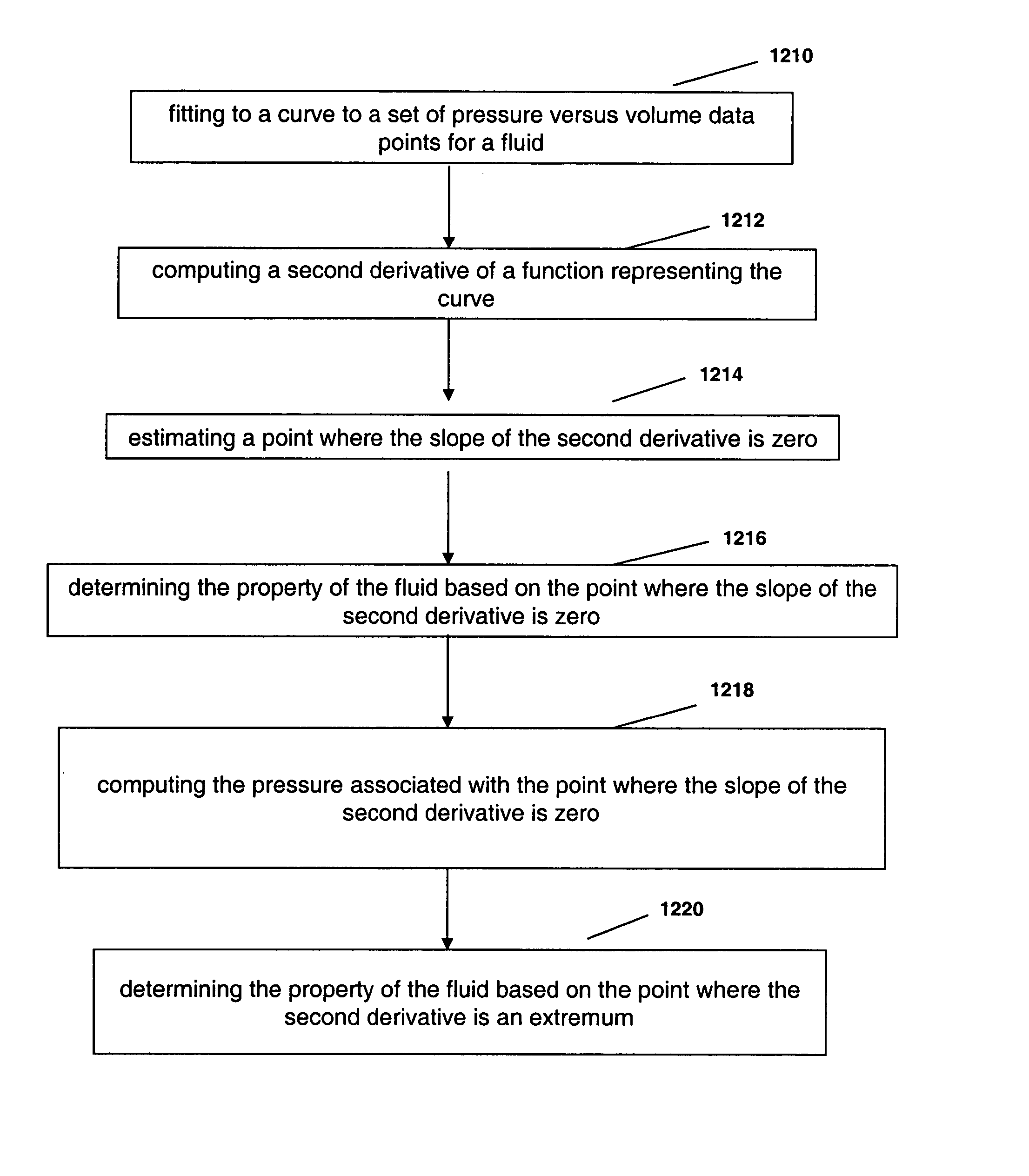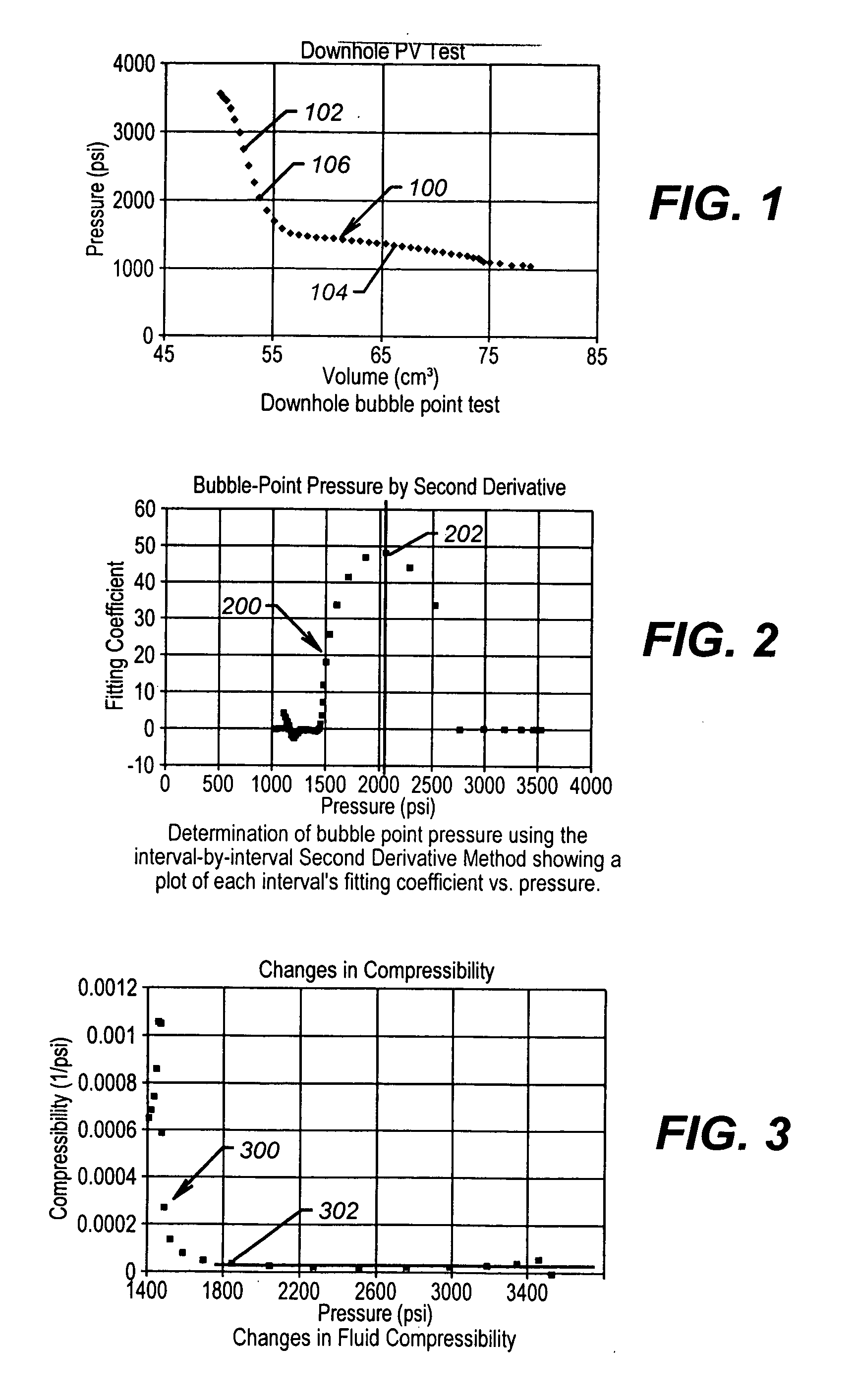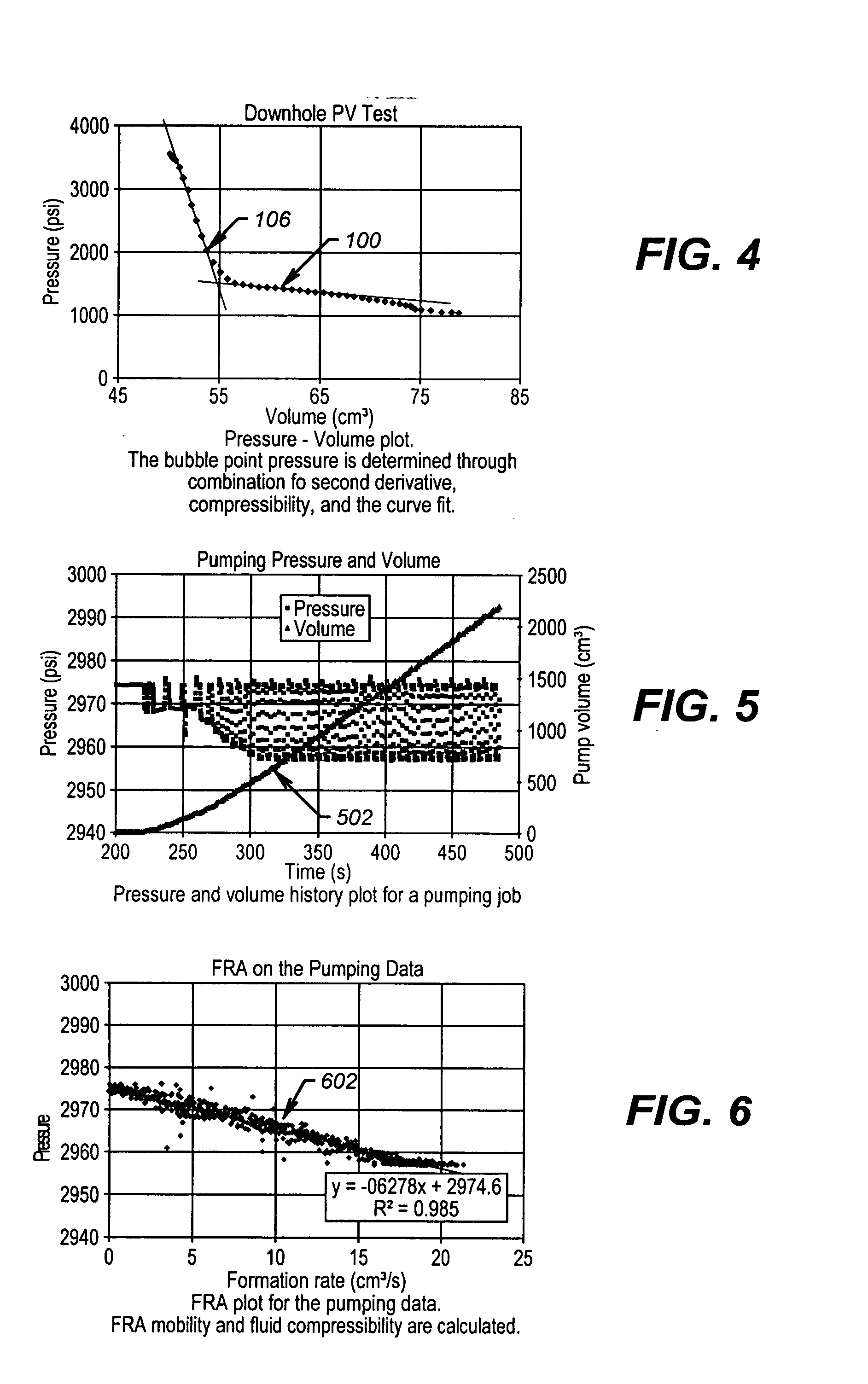Downhole PV tests for bubble point pressure
a technology of bubble point pressure and downhole, which is applied in the direction of borehole/well accessories, machines/engines, instruments, etc., can solve the problems of subjective information from the bubble point pressure test and not as accurate or repeatable as desired
- Summary
- Abstract
- Description
- Claims
- Application Information
AI Technical Summary
Benefits of technology
Problems solved by technology
Method used
Image
Examples
Embodiment Construction
[0026] The following nomenclature is used in the following detailed description:
[0027] k Permeability, L.sup.-2.
[0028] P Pressure, (pounds per square inch (psi). (M / LT.sup.2)
[0029] q Volumetric flow rate, L.sup.3 / T.
[0030] r Radius, cm.
[0031] G.sub.o Geometric factor, 1 / L.
[0032] c.sub.t Compressibility, (M / LT.sup.2).sup.-1
[0033] V.sub.sys Volume of tool system, L.sup.3.
[0034] Turning now to FIG. 1, the shape of a pressure versus volume plot 100 is a steeply sloping line 102, followed by a gently sloping line 104. The bubble point pressure is the pressure at which the steeply sloping line first curves upward 106.
[0035] Traditionally bubble point has been estimated from such curves visually. Visual interpretation is by nature subjective, rather than objective and thus necessarily variant and difficult to produce repeatable results between wells or samples taken in the same well. The present invention provides a novel automated method and apparatus, providing an objection which removes ...
PUM
| Property | Measurement | Unit |
|---|---|---|
| pressure | aaaaa | aaaaa |
| pressure | aaaaa | aaaaa |
| point pressure | aaaaa | aaaaa |
Abstract
Description
Claims
Application Information
 Login to View More
Login to View More - R&D
- Intellectual Property
- Life Sciences
- Materials
- Tech Scout
- Unparalleled Data Quality
- Higher Quality Content
- 60% Fewer Hallucinations
Browse by: Latest US Patents, China's latest patents, Technical Efficacy Thesaurus, Application Domain, Technology Topic, Popular Technical Reports.
© 2025 PatSnap. All rights reserved.Legal|Privacy policy|Modern Slavery Act Transparency Statement|Sitemap|About US| Contact US: help@patsnap.com



